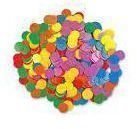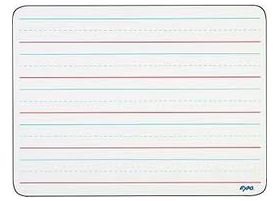Choosing Appropriate Early Childhood Enrichment Materials
Importance of Enrichment
Enrichment can come in many forms in the classroom. The first thing that usually comes to mind is providing enrichment activities for gifted students so that they can be challenged. You can also provide these activities for students who struggle, giving them a chance to find success in the classroom. Also, enrichment is not just for older students; it has a place in the early childhood classroom as well. No matter the level you are serving, choosing the early childhood enrichment materials that fit your needs is the first step.
Evaluate Your Needs
As you consider what enrichment materials to select, you first need to evaluate what your goals are for the students who use them. Are there specific skills or subjects that you need to address? Do you need materials that are suitable for whole group activities or materials that can be used by individuals in centers? Knowing what you need will help you make the best choice for your classroom setting.
Lined Magnetic Dry-Erase Boards
The dry erase boards I link to in the references below were among my favorite and most-used early childhood enrichment materials as a pre-K teacher. They are versatile because you can do
group work, as well as allow students to use them individually in centers. Since they are magnetic, you can use also use magnetic letters or shapes with the boards. Some other activities include:
- Practice writing letters/words; students can use either markers or magnetic letters. You can focus on basic sight words and word families. Have students choose a word from your word wall and then list rhyming words or words that begin with the same letter.
- Practice math computation: students can even draw pictures to figure out more complex problems.
- Draw and make patterns: give students a pattern (for example AABAAB) and ask them to draw a picture to match the pattern.
- Magnetic shapes can be used to make patterns or to introduce the concept of rotation, flips, and tessellation. Your not doing this to have them master the skill, just to broaden their math vocabulary and help them look at shapes in a different way.
Math Trays and Counters

Math counters are a very versatile math manipulative and should be on the top of your supply list for your early childhood classroom. When coupled with hands-on-math trays, you open up the possibilities even more. With the trays you can extend learning in the areas of sorting and making patterns. They also help introduce and expand the skill of graphing and allow you to introduce the use of venn diagrams, which further a student’s understanding of sorting. Some specific ideas for activities include:
- Have students survey the class about their favorite color. They can then use the basic counters and the graphing tray to make a graph of the classes favorite colors. You could also make a graph on the board or on a large sheet of paper and tape the counters to make the graph.
- To accompany a unit, find counters that match the topic and work on different ways to sort the items. For example, a unit on transportation. They sell counters that are shapes of various forms of transportation. You can sort them according to how the move (with wheels/without) or where they travel (land/air/water).
- Work on more difficult patterns with the counters, moving from a basic ABAB pattern to AABCAABC or something similar.
Additional Enrichment Items
Students in early elementary often have difficulty with concepts such as place value, money, and time. These are areas where enrichment in the early childhood classroom may help. If the topics are touched upon, then they may be more easily mastered later on. So, items like base ten blocks, plastic coins, and small individual clocks or a large teaching clock are also valuable tools.
With the base ten blocks, you can take each day on the calendar during circle time and visually show students what it looks like using the blocks. With the large teaching clock, you can simply show the students the current time when you make a transition to a new activity. Just this simple act lets them learn the concept of hours and minutes. With the coins, doing simple activities where the students are just identifying the names of the coins will pay dividends down the line.
Early childhood enrichment materials are meant to compliment your curriculum and help students master skills with a more hands-on approach. Many times, your job is to introduce concepts that will in turn benefit the students as they move on to the next grade. With these activities and materials, you are building a strong foundation for your class and helping them become better problem solvers.
